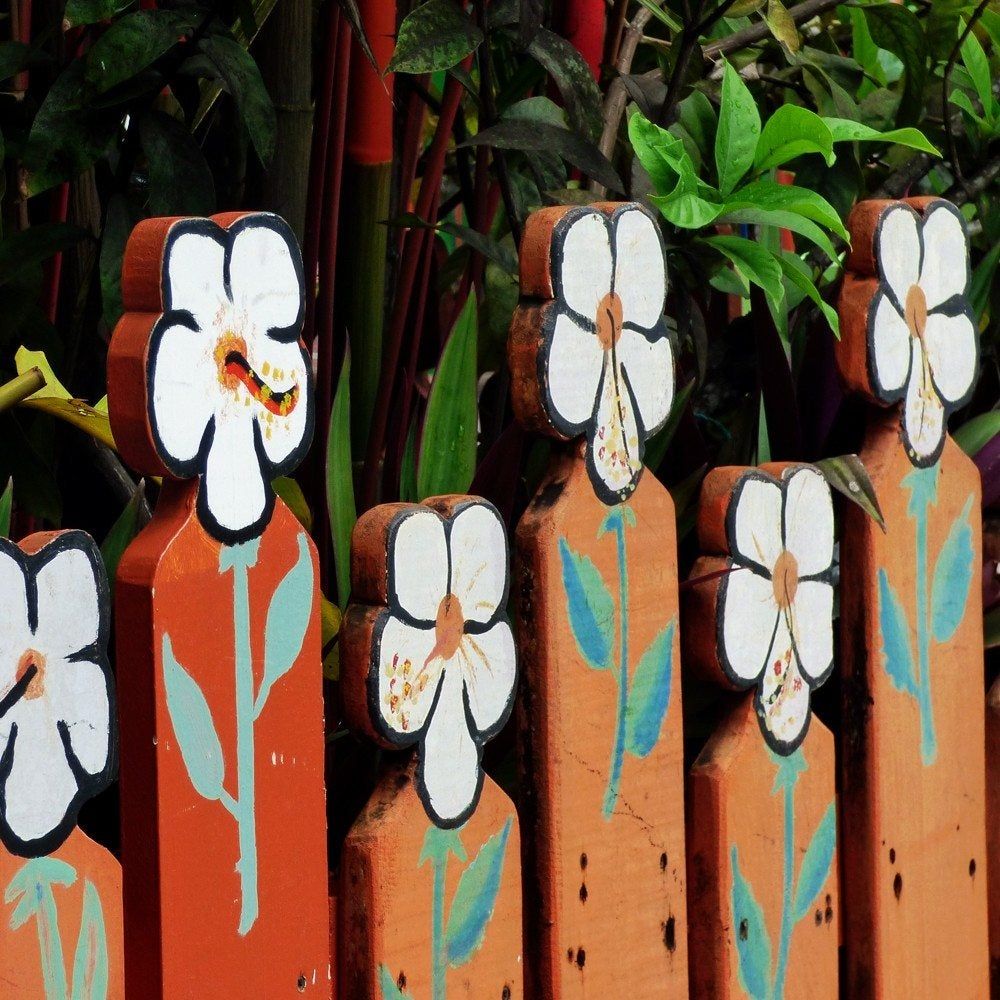Coloring Garden Structures: Tips On Using Color On Landscape Structures


There are many reasons to introduce colorful garden structures and supports to the garden. Northern gardeners with long dull winters may find painting garden structures a delightful way to introduce some much needed color all year around. Using color on landscape structures also provides a foil for other garden colors. Whatever reason you may have, this fun outdoor trend can really add a pop to the garden and is an easy way to transform old structures from ordinary to extraordinary.
Ideas for Garden Color Schemes
Garden color schemes accent the landscape. Whether you are using color in the garden with plants or more obviously on a trellis, fence or outbuilding, the addition of some bright tones will really perk up the garden space. There are many ways to introduce color and activate new senses and viewpoints in the landscape. Experiment with using color on landscape structures. It is an easy way to make something old new again and increase the sensory output of your outdoor space. Adding color to garden structures and buildings is a very individual choice. You may choose a monochromatic palette or opt to mimic a floral display. You may even prefer the crayon box method of daubing unique and unrelated colors all around the garden. There is no right or wrong way to choose color, but ensure the tones don't become jarring or are too subdued to be of any help as an accent. Options for painting garden structures will depend upon what you have in your landscape. You may have a barn, potting shed or garage which are large surfaces and adding color will really impact the garden. Alternately, you may have very small structures available to add color, such as raised wooden beds or trellises. Even coloring landscape structures that are this small will still enhance the greenery around them.
Different Ways of Coloring Landscape Structures
Once you have chosen your palette, it is time to choose your pigment. There are many outdoor paint options at big box stores and hardware outlets. If you are using paint on a wooden barrier around a raised food bed, you might want to think twice about a purchased paint, however, which can leach into the soil and may be toxic. An interesting and safe paint option here is milk paint. It is a mixture of skim milk, lime juice, and natural pigments. You can purchase it or make it yourself by boiling the milk and lime until the milk curdles. Separate out the curds and add pigment to these to make the paint. If you are feeling very artsy, you can also add color by using decoupage onto a fence or wall. Alternatively, you can use brightly colored framed images or objects to interject color to the garden. A fun way to display your children's art work is to paste it to the fence and then use a clear outdoor sealer to protect the artwork. Children's art is notoriously colorful and whimsical, a perfect addition to the garden. Colorful garden structures and supports may also be decorated and enhanced with garden art, mirrors, or any item of interest and value to you. Remember, your garden is as unique as you are and using a cookie cutter approach to landscaping isn't right for many of us. Free your dreams and see what adding a little color can do for your soul.
Gardening tips, videos, info and more delivered right to your inbox!
Sign up for the Gardening Know How newsletter today and receive a free copy of our e-book "How to Grow Delicious Tomatoes".

Bonnie Grant is a professional landscaper with a Certification in Urban Gardening. She has been gardening and writing for 15 years. A former professional chef, she has a passion for edible landscaping.